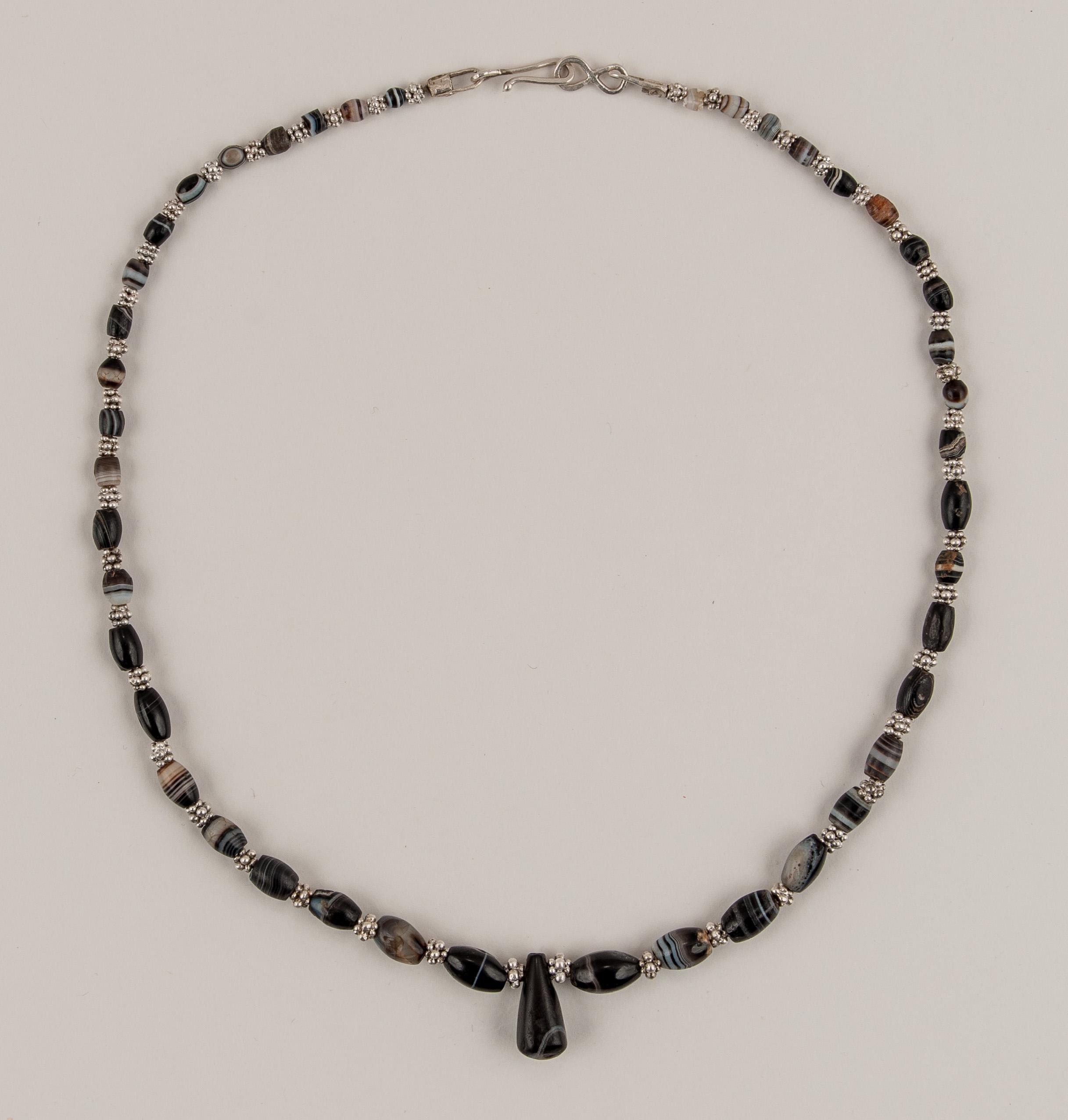Ancient Black Agate Necklace with Handmade Silver Beads and Drop Pendant
Collection:
Swat Valley
Material:
Agate, Silver
Size:
The necklace is 18 ½ inches (47.2 cm) in length. The necklace weighs 22.7 grams.
Price:
$1,675.00
A necklace of forty-five black agate barrel beads with a teardrop shaped pendant at the center of the necklace. The beads graduate in size from the front to the back of the necklace. The barrel beads alternate with silver beads that are composed of three layers of grains, the center layer of which are twice the size of the outer bordering layers; each are rings of five spheres. There are forty-six of these fifteen-ball silver beads, each hand made by the granulation technique. The silver beads also graduate in size towards the back of the necklace. The beading tips and clasp are likewise handmade from Fine (999) silver. The central pendant bead is 1.75 cm in height, 8.2 mm in width at the bottom and 3.5 mm in width at the top. The diameter of the drill hole is 2.2mm. There is a slight concavity around the perforation which is wear that is the result of the bead having been worn for some time. The largest barrel bead is 1.12 cm in length, 7 mm at the middle and 3.5 mm at the ends. The drill hole diameter is 2 mm. The smallest barrel bead at the back of the necklace is 3.4 mm in length, 3.2 mm in width with a perforation diameter of 1.2 mm. The beads are somewhere around two thousand years old and come from the Swat Valley in what is now northern Pakistan, but what was in ancient times the Kingdom of Uddiyana. The beads come from the Swat valley in what is now northern Pakistan but what was in ancient times the Kingdom of Uddiyana. From the end of the 6th century B.C.E., the Swat Valley was part of the Persian Achmenid Empire, called Gandhara. Conquored by Alexander the Great and ceded to his successor Nikator to Chandragupta, founder of the Mauryan Empire, it was then ruled in rapid succession by the Bactrian Greeks, the Sakas and the Parthians. These were followed by the Kushan dynasty from Central Asia which added Swat to its Gandhara Buddhist Empire and ruled it for 400 years. Kanishka I, the third emperor of the dynasty was a strong supporter of Buddhism. So it is not incorrect to think of these beads as “Buddhist beads” as Buddhist art and culture flourished in this area at that time. The beads are somewhere between one thousand and two thousand years old. Afghanistan was a part of this kingdom of Uddiyana (“the garden”); the gigantic Buddha statues at Bamiyan give testimony to its Buddhist past. There are ruins of a large stupa still there in the Swat Valley. Uddiyana was of considerable strategic and commercial importance in the ancient world. Its fertile valleys, warm climate, and above all, its central position on the busy trade routes between Asia and the Mediterranean made it valuable territory to control. As a consequence, it suffered numerous conquests,with each conqueror leaving an imprint on the culture; the result was a cosmopolitan, multi-ethnic society which is reflected in the many types and materials of the beads that are found there.
